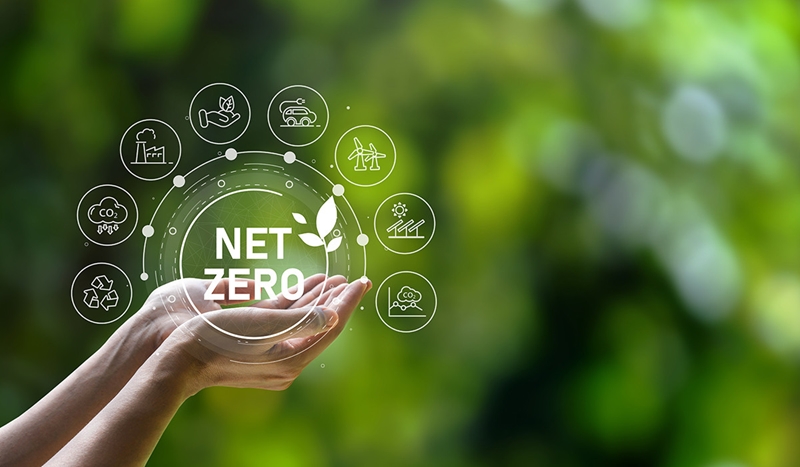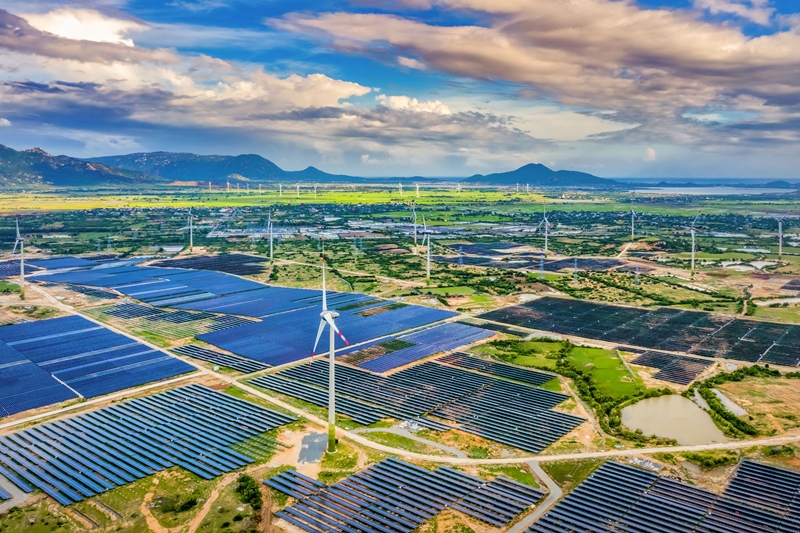 |
| Vietnam needs about 368 billion USD to reach the Net Zero goal. Source: VGP |
Mobilizing many resources to develop green financial market
At the 2021 United Nations Climate Change Summit (COP26), Prime Minister Pham Minh Chinh affirmed that Vietnam is committed to achieving net-zero emissions by 2050.
Choosing green growth is essential in order to complete the long-term goal of sustainable development, become a high-middle income country by 2030 and a high-income country by 2045, and ensure that all people have a quality life.
According to estimates by the World Bank (WB), Vietnam may need to invest an additional approximately 368 billion USD by 2040, equivalent to 68% of GDP each year, to pursue the above roadmap.
According to experts, the green financial market is an important capital channel for green growth in all economies. In Vietnam, the public sector can only meet about one third of the required resources.
In addition to public resources, in recent years, Vietnam has mobilized resources from the private sector and international organizations, through the formation and development of the green financial market. To date, the green financial market in Vietnam has formed a foundation and developed with 3 components including: green credit, green stocks and green bonds.
Completing mechanisms and policies to develop markets and green financial products, thereby helping to mobilize green capital flows from investment funds into the stock market is considered a priority of the Government and the business community.
According to statistics, from 2019-2023, Vietnam has issued 1.157 billion USD of green bonds. The Ministry of Finance has coordinated with relevant agencies to complete the legal framework on green bonds. The market now has government bond products, government guaranteed bonds and local government bonds serving “green” projects or constructions such as irrigation, environmental protection, wind power and solar.
Aiming to encourage the development of the green bond market, the Ministry of Finance has issued a circular guiding green bond issuers and investors to enjoy a 50% discount on green bond service prices in the skock market.
According to data from the State Bank of Vietnam (SBV), as of June 30, 2023, Vietnam’s green credit balance is still quite modest, valued at 528.3 trillion VND, accounting for about 4.2% of the total outstanding loan balance of the economy.
According to Mr. Tran Hoai Nam, Deputy General Director of HDBank, international financial capital for green development is no longer cheap. However, in the long term, capital from international financial institutions still remains important in moving towards green bonds and green credit.
Another challenge is the ability to innovate with green development. This includes infrastructure and production conditions; human resources and workers training; and management standards and information disclosure standards. These lead to a transition process that not all businesses are ready for, especially in terms of investment capital and operating activities.
 |
| Renewable energy development is a focus on implementing emissions reduction goals. (Photo: tapchimoitruong) |
Big challenges, numerous opportunities
Opportunities also come with challenges. According to Mr. Tran Hoai Nam, Vietnam can access preferential capital sources. Many major financial institutions in the world and Vietnamese commercial banks have committed, supported and continuously increased the limit of green credit financing.
Green transformation will also help reduce future costs and enforce environmental issues and sustainable development, help businesses improve their credit rating, attract investment capital into businesses, and help businesses restructure production activities, human resources and labor productivity, and management standards. From there, businesses enhance their competitiveness, expand markets, especially markets that require green certificates, and improve operational efficiency.
For the banking industry, the State Bank of Vietnam has approved the “Green Bank Development Project in Vietnam” along with action programs to realize the National Strategy on Green Growth appropriate to each stage.
Management agency also requires commercial banks to develop regulations on social and environmental risk management in credit granting activities, promoting green credit granting activities. The SBV targets that by the end of 2025, the proportion of Green credit in the economy will reach 10%, up from about 4.2% currently.
Mr. Tang The Hung, Deputy Director of the Department of Energy Saving and Sustainable Development under the Ministry of Industry and Trade, assessed that Net Zero is a huge challenge in the economic development process, but feasible. According to the normal scenario, Vietnam’s total emissions by 2030 are expected to be 932 million tons, of which the energy sector accounts for 680 million tons.
The field of wind and solar power can attract potential investors and create conditions for banks to finance capital when the world currently favors green capital and green finance, and this will be a competitive criterion among banks in the near future. This is expected to help Vietnam develop its energy industry, aiming to become a clean energy industry center and a renewable energy exporter in the region./.